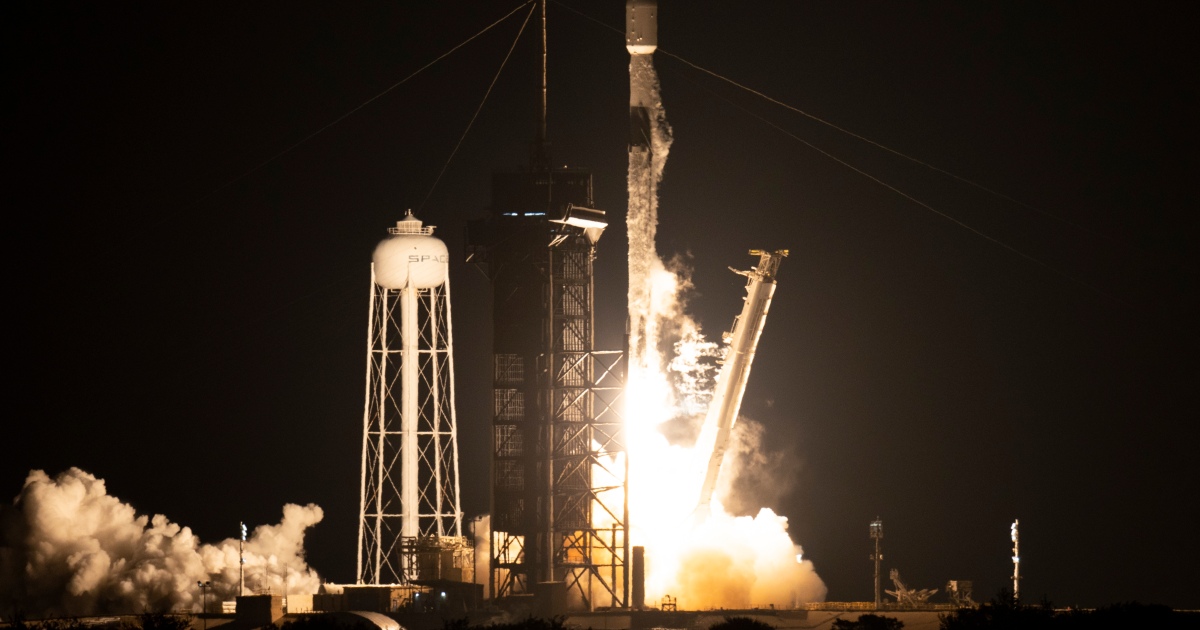
SpaceX has successfully launched a Falcon 9 booster for a record 16th time, highlighting once again the company’s ability to reuse the first-stage booster for multiple space missions.
The Falcon 9 lifted off from the Kennedy Space Center at 11:58 p.m. ET on Sunday, carrying with it 22 next-generation satellites for SpaceX’s internet-from-space service, called Starlink.
The clip below shows SpaceX’s workhorse Falcon 9 rocket heading to orbit for the 16th time.
Sixteen launches means 16 landings, and about eight minutes after launch the first stage returned to Earth, landing upright on a drone ship stationed in the Atlantic Ocean just off the coast of Florida.
The record-breaking booster has also launched the ANASIS-II, CRS-21, Transporter-1, and Transporter-3 missions, and following Sunday’s flight a total of 11 Starlink missions, too.
Aside from performing the most launches, this particular first-stage booster is special for another reason, too, as it carried the first SpaceX astronauts to orbit in a test flight to the International Space Station in May 2020. In the Demo-2 mission, NASA’s Doug Hurley and Bob Behnken traveled inside a Crew Dragon spacecraft and stayed at the orbital outpost for just over 60 days.
The historic mission marked the return of crewed liftoffs and landings inside U.S. territory after a nine-year layoff following the retirement of the space shuttle program in 2011.
SpaceX achieved its first Falcon 9 reflight in March 2017. The company’s CEO, Elon Musk, described the endeavor at the time as “a huge revolution in space travel,” adding, “It’s the difference between … if you threw away an airplane after every flight versus you could reuse them multiple times.”
The company’s flight system enables missions to be performed at lower cost and greater frequency, enabling space access to more customers across multiple sectors.
Editors’ Recommendations
Services Marketplace – Listings, Bookings & Reviews
